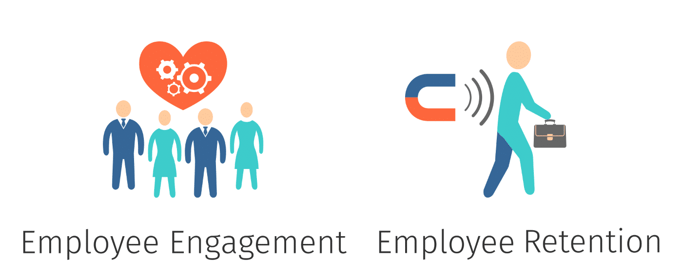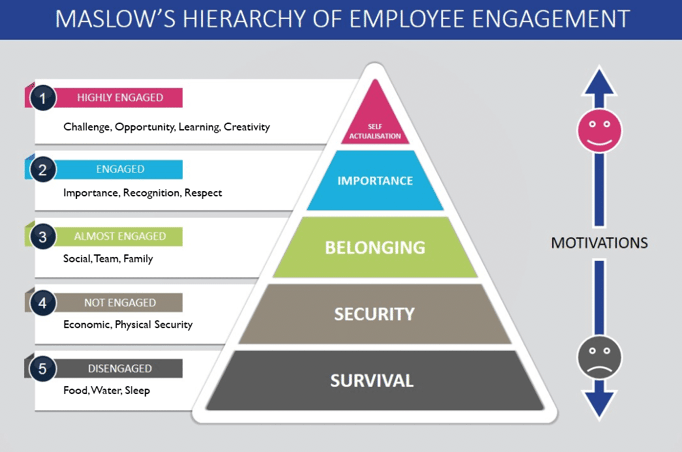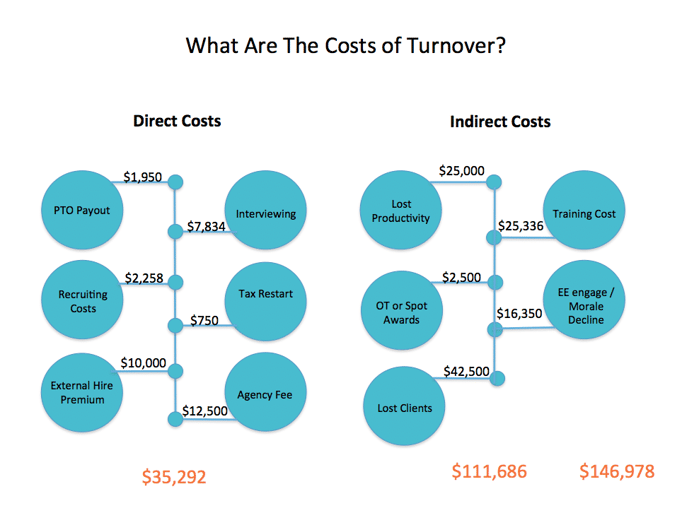
This holiday season, do you plan to thank your employees by hosting an office party? When it comes to employee rewards, too many business owners/managers think a party and a paycheck is enough.
However, research indicates that if you aren’t rewarding and recognizing employees’ contributions 365 days of the year, your business’s profits are apt to suffer. Now, that’s a statement that’s sure to get the attention of even the most notorious Scrooge.
The proof that employee recognition matters isn’t in the Christmas pudding; it’s in examining how people drive profits. When employees are unmotivated, they are not productive. When they aren’t challenged, they leave. These common employee concerns have hidden costs that impact the bottom line.
ROI on Human Capital
Let’s look at what happens when an employee wastes just 15 minutes a day. In a 40 hour work week that’s 1.25 hours or 3.125 percent of a work week. For a service business with $3 million in revenues, this lost productivity of 15 minutes a day can translate on an annual basis to $93 ,750 in lost billable time.
In contrast, when employees are productive for an extra 15 minutes a day that time can be billed to clients, and without any additional labor expense, the revenue generated will filter directly to the business’s bottom line.
Cost of Turnover
Profits are impacted again when an unmotivated, unproductive employee quits. The company must bear the cost to recruit, hire, train and get up to speed a replacement. These often overlooked overhead expenses are deducted from the business’s gross profit, translating to money coming right out of the owner’s pocket.
Turnover is a big expense of doing business. According to the U.S. Small Business Administration, the cost to replace an employee goes up with the employee’s rank in the company.
For instance, to replace an entry level, non-skilled employee is up to 50 percent of the employee’s annual salary. Whereas, for a supervisor’s position the turnover cost could soar up to 150 percent of the manager’s annual salary.
Retention
So what can a business owner do to retain employees? Offering employees a bigger paycheck or schmoozing them with a once-a-year fete isn’t going to fix a retention problem. You must understand employees’ true workplace motivations.
Reasons why employees stay with a company:
- Challenging and intriguing work (48%),
- Experiencing a work-life balance (41%),
- Partnering in the organization’s growth plan (34%)
Reasons why employees leave a company:
- Lack of recognition
- Work isn’t challenging
- Company’s vision is undefined
- Employees don’t know their role in the company’s vision
- Employees lack clear goals, coaching and rewards
People want to be valued and included in something bigger than just themselves. By understanding these employee needs for self-actualization, small businesses can take steps to improve employee retention and productivity, which is critical to business success.
So, how can you engage employees and motivate them to give discretionary effort? How do you entice your employees to act like owners? Answers can be found in the employee hiring and performance evaluation processes.
Hiring for Behaviors
Not surprisingly, hiring the right person for the job from the start is one of the ways to ensure employee’ retention. While all of the job candidates should have the right skill set to do the job, how do you differentiate which one will be happy and successful in the position?
The solution is to look for candidates whose behaviors match the core values of the company. For instance, at GrowthForce, we look for people who operate and make decisions based on these personal characteristics (which also happen to be the core values of our company):
- We have snap (a.k.a. intellectual curiosity)
- We get into our client’s business
- We do what we say, and say what we mean
- We work well with others (a.k.a. team players)
When a company hires for behaviors first, employees fit like a puzzle piece into the corporate culture. People enjoy working with others who act and think like they do. Correspondingly, employees are more likely to stay when work gets tough because they have engagement with their co-workers and the company.
Performance Management
Employee engagement and loyalty can also be instilled by implementing a company performance management system. Performance management is the ongoing communication process between a manager and an employee, designed to accomplish the strategic objectives of the business.
The steps in a performance management system include establishing employee performance expectations, coaching the employee towards goals, reviewing performance, and rewarding and recognizing accomplishments.
Goal Setting
The first step in performance management is for the business to solidify company goals in writing. A landmark study by Harvard University found that people who have written goals are 80 percent more likely to succeed than those who don’t put their goals down on paper.
The study explains that writing out goals generates employee motivation, creates alignment and provides a pathway toward meeting objectives.
Once a company establishes its goals in writing, the goals then must be cascaded down to formulate written department and individual employee’ goals. In that way, each person can see (in writing) the line of sight between their day-to-day actions, their career, the department and the company.
Employee goal setting works best when goals are negotiated and mutually agreed upon by the employee and management - not dictated from on high.
When employees have ownership in their own goals, they have increased motivation, stemming from the innate human desire for accomplishment. Correspondingly, when their goals mesh with those of the company, they feel ownership in the company’s goals.
Performance Review
A company must structure its performance review system to measure employees’ success in reaching their goals. Today, employee performance measurement is the single most important characteristic separating successful firms from less successful ones. The traditional performance review with its canned questions and once a year timing is no longer effective.
To measure performance, business owners/CEOs must understand what type of behaviors and skills are successful for each position in a company. Goals must be established to match actual performance with the behaviors which are effective for the employee’s job and fit with the company’s core values.
One solution to implementing performance reviews is Insperity’s PerformSmart®. The online performance review system helps businesses align employee goals with performance and compensation. PerformSmart features include:
- Sets and tracks measurable employee goals
- Engages employees with self-reviews
- Allows for remote usage
- Customizes performance evaluation process to suit company
- Stores employee reviews and data securely online
Performance Coaching
Just like in sports, motivational coaching techniques can positively impact individual and team performance in business. A performance coach (a.k.a. supervisor) cheers on employees by checking their goals weekly and giving them ongoing support to reach those goals. Examples of supervisor support tactics include daily standup calls and weekly team meetings.
PwC professional services network reports that the median return for companies investing in performance coaching was 700 percent due to improved employee retention. The most productive workers report that coaching by their supervisors provides:
- Greater job satisfaction
- Positive morale
- Commitment to the company’s mission and vision
Training
Logically, an employee cannot be expected to achieve his or her goals without job training, as well. Untrained employees can cost business more than their wages: they can cost a business customers.
Two out of five firms claim to have missed performance targets or delayed initiatives because of human capital issues. Yet, ironically, when CEOs were asked if they plan to cut spending on training over the next 18 months, 77 percent said “yes.”
That decision is not smart business. Well trained employees are more efficient (more billable hours), committed (less absenteeism and turnover) and effective (increased company competitiveness). Not surprisingly, all those characteristics have a positive impact on company profitability.
Rewards and Recognition
Once a business has the right people and performance management system in place, how does a business owner/CEO motivate employees to contribute “discretionary effort”?
Companies that have an employee recognition program have a 63 percent increase in productivity just by recognizing their high performers, according to the Society of Human Resource Management. That translates into a 58 percent increase in profits.
By providing recognition and rewards for performance, a company can extract that extra effort. Rewards are given to express appreciation, recognize value of employees, provide encouragement, compensate employees for taking and/or sharing risks, and make work fun.
Salary vs. Incentive Compensation
A reward is not simply providing a paycheck. Employees can get a market salary anywhere. A salary should just be an employee’s base pay - the amount an employee needs to live.
Incentive compensation is acknowledging extra effort - rewarding behavior tied to individual goals and the company’s strategic goals such as revenue, profit and customer satisfaction.
To calculate incentive compensation, a business owner/CEO should ask: “If they stretch, how much should this person make at my company?” The difference between total compensation and salary equals an employee’s bonus potential.
How to Encourage Extra Effort
A business’s culture must incorporate both monetary (extrinsic) and non-monetary (intrinsic) rewards. As shown in the famous Maslow’s Hierarchy of Needs pyramid, intrinsic rewards are those that provide self-esteem (recognition) and self-actualization (challenge). Remember that most employees say they leave because they don’t feel that they are being recognized or challenged at work.

Effective employee recognition tactics include awards for years of service, kudos announcements at quarterly meetings and time off for community service.
Recognition among peers and co-workers can have a long-term impact on employee work engagement and job satisfaction. Effective self-actualization tactics include all-important training and career development initiatives such as classes and seminars paid for by the company.
The Human Element
The impact of people on profits cannot be underestimated. The American Institute of CPAs estimates that 68 percent of the value in a company is derived from its employees. A human capital strategy, including rewards, recognition and performance evaluation, acknowledges the employees who did the most to help contribute to a business’s success.
By tying together human capital and performance management strategies, a business can reduce turnover and the associated overhead costs. That cost savings allows more money to filter into net profits and the owner’s pocket book.

.png?width=563&height=144&name=New%20GF%20Logo%20(37).png)
